Dell Precision 3280 Compact Performance
This system has an Intel Core i9-14900. That is a massive 24 core and 32 thread CPU with 8x P-cores and 16x E-cores. It also has a 65W TDP.
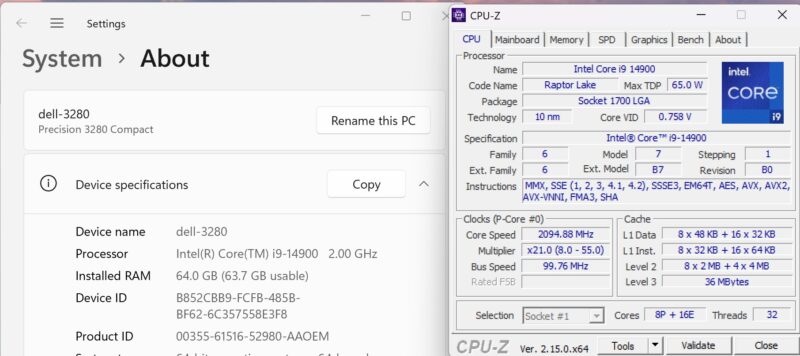
Frankly, 24 cores in a system like this is a lot, but also with that 65W TDP we would expect higher performance and power than the 35W TDP CPU options. The Core i9 also gives us vPro as a feature while some of the lower-end Core i3 options, for example, do not.
Python Linux 4.4.2 Kernel Compile Benchmark
This is one of the most requested benchmarks for STH over the past few years. The task was simple, we have a standard configuration file, the Linux 4.4.2 kernel from kernel.org, and make the standard auto-generated configuration utilizing every thread in the system. We are expressing results in terms of compiles per hour to make the results easier to read:
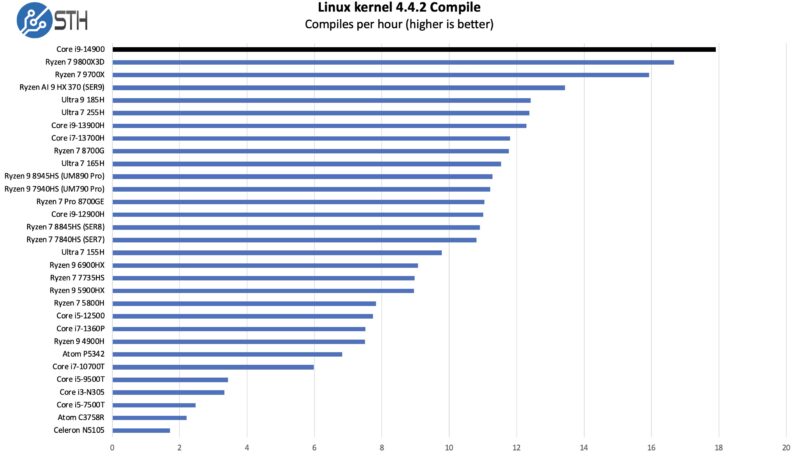
This processor can provide a lot of raw performance when the cores are able to go at full speed.
7-zip Compression Performance
7-zip is a widely used compression/ decompression program that works cross-platform. We started using the program during our early days with Windows testing. It is now part of Linux-Bench.
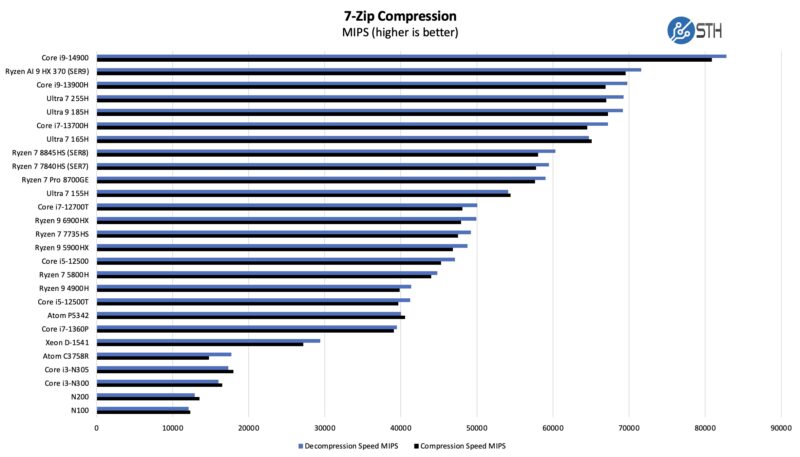
It is certainly one of the faster mini PC options out there.
OpenSSL Performance
OpenSSL is widely used to secure communications between servers. This is an important protocol in many server stacks. We first look at our sign tests:
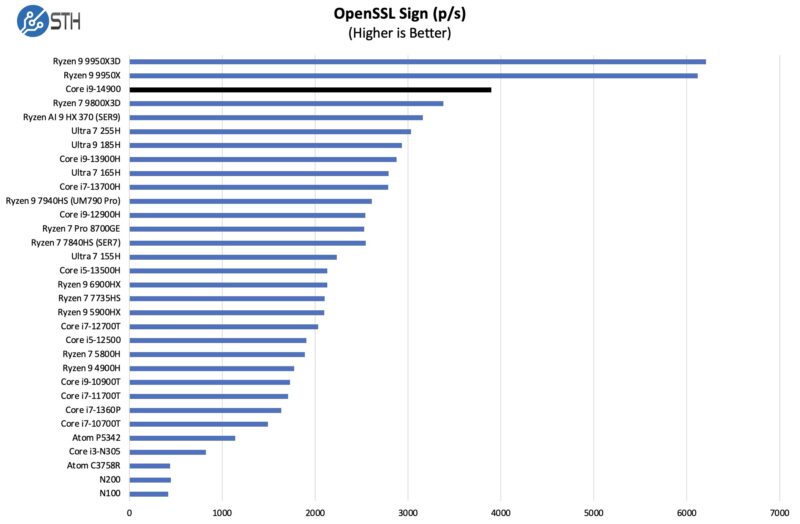
Here are the verify results:

One way to think about this is that it is somewhere between those 35W mini PC CPUs and the higher-end desktop CPUs that have much higher TDPs.
Geekbench 5 and Geekbench 6
Just so you can easily compare this to your own system, we have a number of Geekbench 5 and 6 results. Here is the Geekbench 5 CPU result:
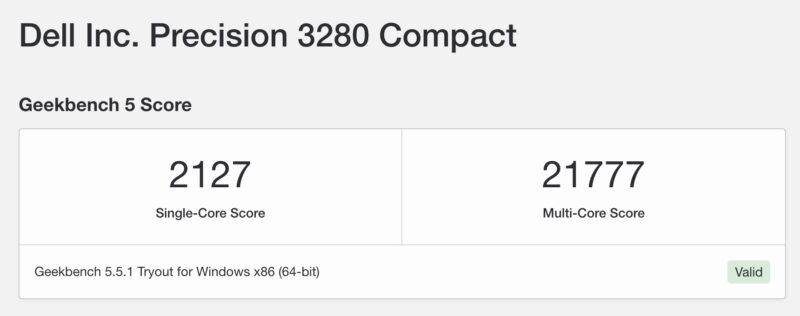
Here is the Geekbench 6 result:

Still, a big reason to get this type of system is the ability to have the NVIDIA GPU. Just for some sense, here is the Geekbench 6 (GPU) Compute result versus the Apple Mac Studio M3 Ultra 512GB in OpenCL:
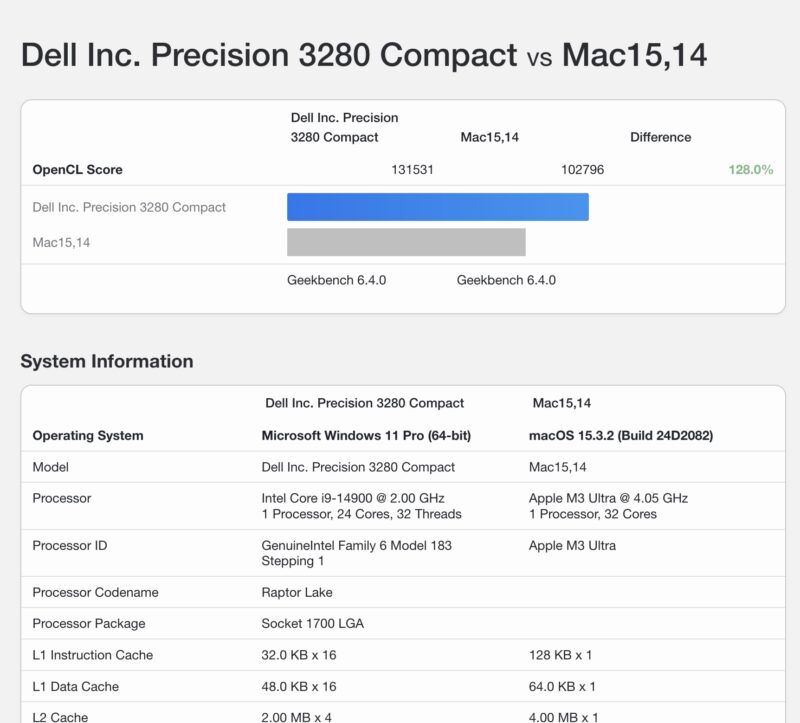
When using Metal, the Apple M3 Ultra performance goes up a TON. Still, this is a system at around 1/3 the price.
One other one we wanted to show was perhaps our favorite 2024 Mini PC, the ASUS ROG NUC with the NVIDIA RTX 4070 notebook edition:
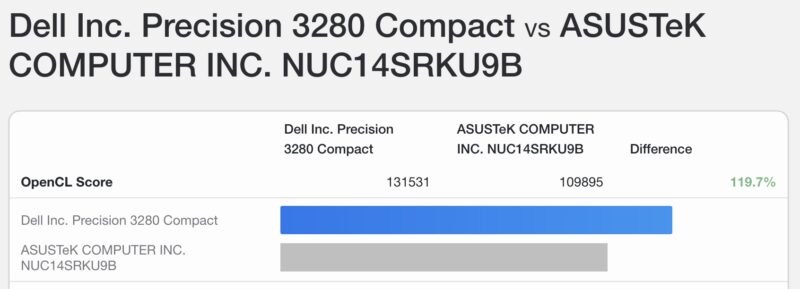
That is a pretty massive delta between the two. Of course, the NVIDIA RTX 4000 Ada SFF is quite expensive, but at least you are getting a performance benefit from it while maintaining a compact form factor.
Next, let us get to power consumption and our key lessons learned.

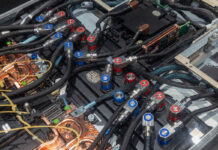
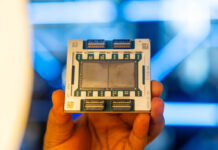

>Next to the USB ports we get a 1GbE Intel i219-lm port. We, of course, would prefer a 2.5GbE port standard, but this likely done to support Intel vPro management.
Both i225-LM and i226-LM provide 2.5G and vPro/AMT support.
They still have problems despite new hardware revisions, so that might be the actual reason why Dell chose to go with older 1G model.
Would have been nice to see a photo of the PCI riser without the NVIDIA card installed. I have zero interest in graphics or GPU computing but there are a number of other things I might like to install in this system, and a picture being worth a thousand words, it would make it much easier to see what’s going on there.
As I understand it, it’s only a single slot riser with space for a double wide card, is that right? Is there a two slot riser option?
@Matt
Dell has excellent documentation and you can see the riser photos there. I can’t paste a direct link but you can find it on their site: Precision 3280 CFF Owner’s Manual -> Removing and installing Customer Replaceable Units (CRUs) -> Intel E810 Ethernet network adapter -> Installing the Intel E810 Ethernet network adapter into the riser-card module.
It looks to be a dual x8 open-ended slot riser, but it has a proprietary slot on the motherboard.
I really missed seeing USB4 support, as well as a second, potentially 5 or 10Gbps NIC. These things really shouldn’t cost that much in 2025 and we’re talking about a workstation here. Random Chinese manufacturers can manage it, Framework can manage it on their desktop, so how come Dell is still stuck in the past? I do appreciate the PCIe expansion, but it’s worthless if I have to use it up for networking or extra connectivity.
Believe it or not, most enterprise networks use 1GbE ports for their clients (still). A use case for something above 1Gbps is completely valid, but Dell is too closely aligned with what corporate purchasing is requiring, and they don’t require it. Servers are a different matter.
For most network admins, they consider 1Gbps for a client as more than adequate.
So until Corporate USA starts buying faster ports from Cisco or whomever, this is what they make.
I’d argue the labeling on the USB ports is fine. the label sits between the two ports, so since they’re the same, it just covers both left and right of the label. Yea its different, but it makes sense to me.
I’m very unhappy to see that DELL gave up the Precision Rackstation 3930 1U with no replacement. The sales representative tried to fool me with 10 000 € rack models but the reason to own a 3930R was the capabilities with single core apps using an intel i9900k.
The more expensive models have much more RAM but perform poorly in single core use.